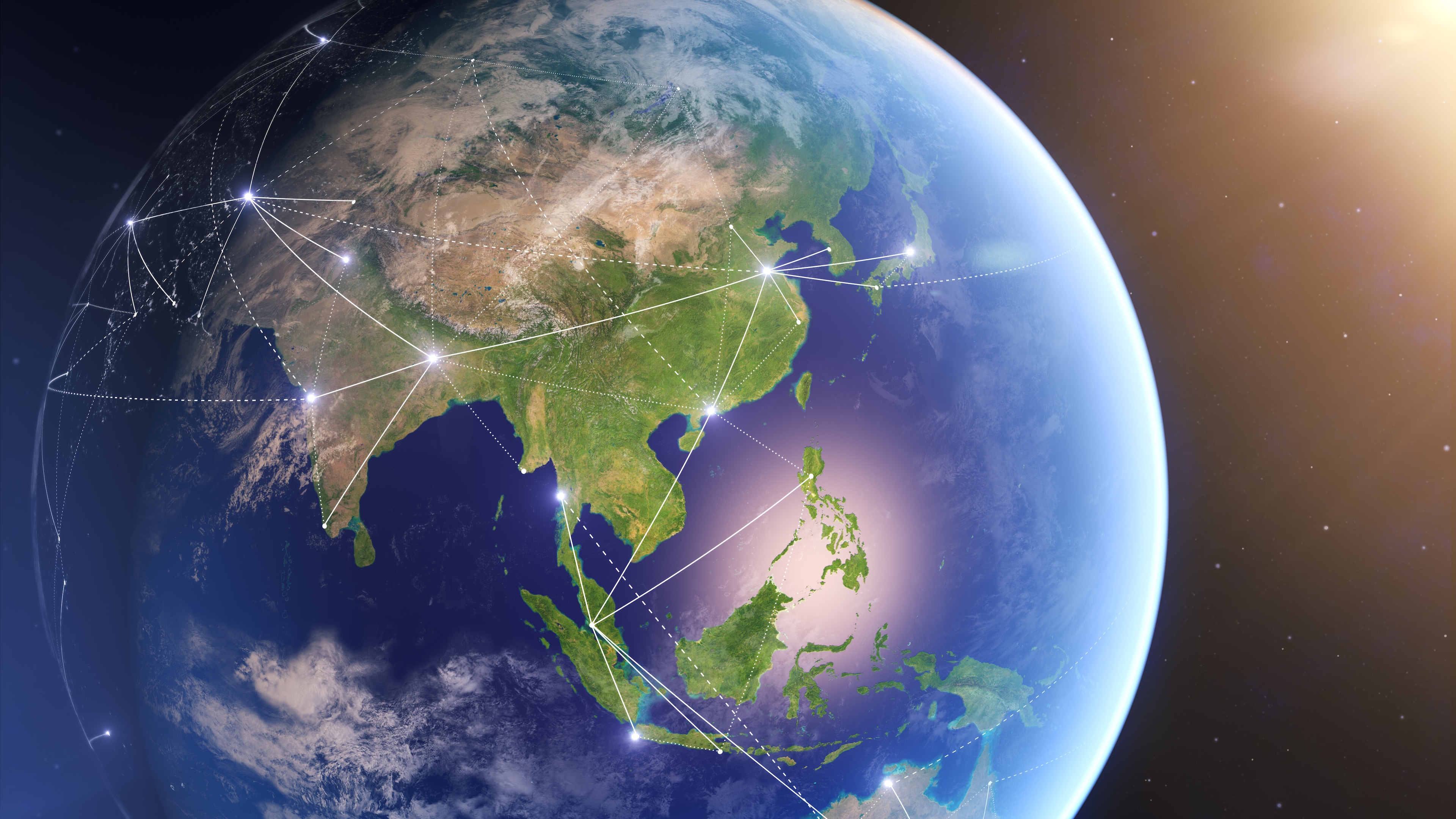China's economic growth story recapped

China's dramatic economic growth is still a work in progress.
Image: REUTERS/Florence Lo
- China’s economy has notched decades of dizzying expansion.
- It’s now pursuing what the government calls ‘high-quality’ development.
- These and many other issues will be discussed at the World Economic Forum’s upcoming Annual Meeting of the new Champions #AMNC24 in Dalian.
One brutally cold evening when I was still in grade school, a trade delegation from China’s northernmost province turned up at our house in a leafy Midwestern American suburb for dinner.
My dad, a public servant with the local Department of Development, marched me up to the delegation’s leader, a man with a personal history shaped by revolution and unimaginable struggle, to shake his hand. It felt like it had been carved out of granite.
At a time when Japan was the country deemed America’s most daunting commercial rival, and just a handful of years after the opening up of China’s economy, this was a glimpse of the Middle Kingdom’s budding global ambition.
Everyone’s had far more than a glimpse by now.
Lately, questions have been raised about whether China’s now middle-aged modern economy is enduring a kind of mid-life crisis. It has set some pretty high expectations, after all.
Economic output per person, in a country currently with a population of 1.4 billion, increased by about 3,000% in the past few decades. It was recently christened the “de facto world leader” in nuclear technology. It has built more high-speed rail lines than the rest of the world combined. It is the world’s leading car exporter, and it can create vast fortunes and reshape agricultural production in other parts of the world when it acquires a taste for curiously scented fruit.
And China’s capacity to churn out so much of the green technology needed to combat the climate crisis has other economic powers scrambling for an adequate response.
How did it get here?
China’s economic evolution is frequently and casually referred to as a “miracle.”
Around 1953, when it first adopted the Soviet-style five-year plans that still provide its economy’s basic rhythm, an estimated 88% of the country’s population was living in poverty.
By the time Deng Xiaoping made the sweeping decision to open up China’s economy to the outside world in 1978, the poverty rate had been cut to about 40%. Roughly four decades later, the World Bank pegged China’s rate at 0.1% - compared with 9.7% globally.
By 2020, one out of every five items being manufactured and exported in the world was originating in China, up from just 3% in 1995. But it wasn’t just about making things, it was also about mining them; the country zeroed in on processing rare earth metals in the 1980s, well before they’d become key ingredients in solar panels, windmills and electric cars.
The Shanghai Stock Exchange reopened in 1990, after being shuttered for 40 years. It now touts itself as the third-largest exchange in the world.
The “financialization” of the country’s real economy remains relatively limited, China expert Markus Herrmann recently explained to the Forum's Radio Davos podcast. Still, the Shanghai exchange frequently (but not always) provides a vital means to raise capital for a scrappy domestic private sector.
China’s ‘scientific outlook’ on development
The communists running the Soviet Union in its earliest days decided to flirt with capitalism as part of something called the “New Economic Policy.” It lasted only seven years. China’s economy has remained open to free markets and trade for decades now, to varying degrees.
China was eager to finally enter the World Trade Organization in 2001, because it meant access to new trade partners, better deals with existing partners, and a chance to dramatically improve its standard of living. The US was also eager to have China on board.
“Few countries anticipated what would happen as a result of China’s access to their domestic markets,” China expert Keyu Jin has written.
China’s full insertion into the global trading system meant it could have an equal impact on its free-trading peers. Lately, that impact has been felt in the form of green technology.
Deng Xiaoping may have made the decision to initially open up China’s economy in 1978, but Herrmann noted that it was Deng’s successor, Hu Jintao, who refined that vision a quarter of a century later – to say the country had to apply a “scientific outlook” to its development. If you were looking for a scientific means to leapfrog past wealthier countries at that point, and decarbonize in the process, green was a good bet.

China, like seemingly just about every other major economy, is now pursuing a mastery of artificial intelligence and advanced semiconductors. It’s part of what the government has described as a transition to “high-quality” development.
The role of private capital in this probably won’t look much like it does in the West. In China, private capital is “an important component” of the socialist market economy, Herrmann said. It doesn’t run the show.
The country’s real estate sector serves as a reminder of that positioning; a few years ago, a government right-sizing in response to what was deemed counter-productive market speculation meant that in a relatively short time, the sector slipped from accounting for a quarter of the country’s GDP to closer to a fifth.
The lows that can accompany dizzying highs are a part of what’s been planned as a long journey to modernization and national rejuvenation. In the meantime, other countries should prepare for a long period of increasing (and hopefully constructive) competition.
The trade delegation from Heilongjiang Province hosted by my dad on that cold evening in Wisconsin several decades ago was part of a broader effort that resulted in a sister state agreement, designed to promote mutual prosperity.
The relationship has spawned virtual chess competitions, and served as a basis for visiting art exhibitions. In the depths of the COVID-19 pandemic, it facilitated the delivery of much-needed masks and medical outfits from Heilongjiang.
Small things, in a geopolitical sense. But small things that can help us not lose sight of the bigger picture.
More reading on China’s economic growth and ambition
For more context, here are links to further reading from the World Economic Forum's Strategic Intelligence platform:
- What is China’s national AI strategy? According to this piece, a recent lecture delivered to the country’s top legislative body provided a “rare and revealing look” at the big-picture plan. (The Diplomat)
- How to stop worrying and learn to love China’s excess industrial capacity: according to this piece, it’s all about focusing on the cheap green goods needed for the global clean-energy transition. (Project Syndicate)
- If you want a good place to start deploying all of those Chinese-made solar panels, this report suggests the Global South. (Ember)
- China’s coal production still accounts for more than half of the world’s total, according to this report, which examines efforts in two major coal-producing Chinese cities to help miners transition to less carbon-intensive jobs. (Harvard Kennedy School)
- Another potential addition to China’s “biggest-in-the-world” roster is a $5 billion particle accelerator that could provide “insights into the evolution of the universe.” (Nature)
- China needs the smallest and fastest chips to transform itself into a technology powerhouse, according to this piece, but – at least as of yet – it doesn’t make them. (The Atlantic)
On the Strategic Intelligence platform, you can find feeds of expert analysis related to China, Economic Progress, Geopolitics, Trade and hundreds of additional topics. You’ll need to register to view.
Accept our marketing cookies to access this content.
These cookies are currently disabled in your browser.
Don't miss any update on this topic
Create a free account and access your personalized content collection with our latest publications and analyses.
License and Republishing
World Economic Forum articles may be republished in accordance with the Creative Commons Attribution-NonCommercial-NoDerivatives 4.0 International Public License, and in accordance with our Terms of Use.
The views expressed in this article are those of the author alone and not the World Economic Forum.
Forum Stories newsletter
Bringing you weekly curated insights and analysis on the global issues that matter.
More on Economic GrowthSee all
Atul Kumar
August 12, 2025
Elizabeth Henderson and Daniel Murphy
August 8, 2025
Li Dongsheng
July 31, 2025
Charlotte Edmond
July 30, 2025
Naoko Tochibayashi
July 30, 2025
Matt Watters
July 29, 2025






